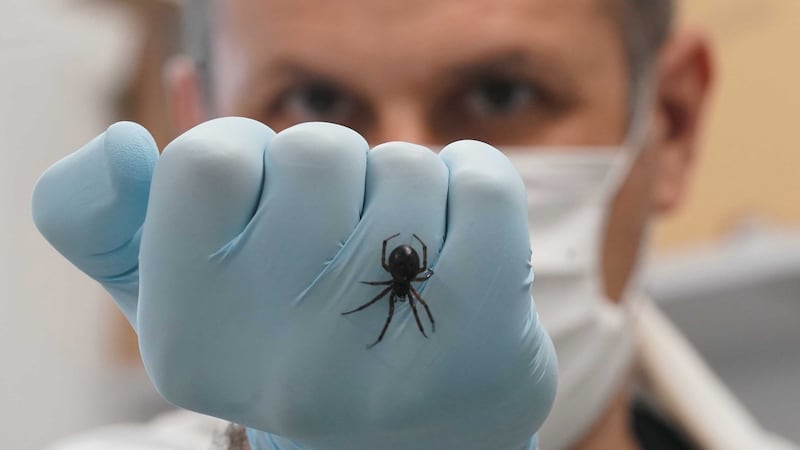Irish scientists have published the first record of a noble false widow spider feeding on bats having ensnared them in their web.
It is the first time for any species of false widow spider to be recorded preying on mammals. In this case, its prey was a protected species of pipistrelle bats.
The scientists based at the Ryan Institute at NUI Galway said their recording further demonstrates the threat the spider posed in undermining native species.
It is the first time a member of this family of spiders – called theridiidae – has been recorded preying on a bat anywhere in the world or on any vertebrate in Britain.
The extraordinary discovery was made by wildlife artist Ben Waddams at his home in north Shropshire, England. On two consecutive days, bats living in the attic were found entangled on the spider's web below the entrance to the roost.
The first bat, a young pup, was immobilised with its limbs pinned tightly to the torso with silk. It was slightly shrivelled and discoloured from the spider feeding off the remains.
A second, much larger adult bat, was also captured and entangled in the web but as it was still alive, the bat was rescued from the web and released. Such grisly events are not as uncommon as people might expect; three years ago the noble false widow spider was reported feeding on a protected species of native lizard in Ireland.
Originating from Madeira and the Canary Islands it has the potential to become one of the world's most invasive species of spider. It was first reported in southern England in 1879 and has increased its range and population density in recent decades, spreading northwards to Scotland and westward through Wales and Ireland.

Characteristics
The species is known for its medical significance, having the ability to cause a range of mild to severe symptoms in people who are bitten, but little is known about its impact on native species.
Over the past five years, a team led by Dr Michel Dugon in NUIG's venom systems lab, have been studying a wide range of characteristics specific to the species including its venom; ecology and behaviour.
Dr Dugon said: “We have been working on the noble false widow for the past five years, and have learnt a great deal about this species – yet, we are still surprised by its ability to adapt to new environments and make the most of the resources available. It is a truly remarkable species.”
Dr John Dunbar, the lead author of a study published in Ecosphere detailing the case, said: "In more exotic parts of the world, scientists have been documenting such predation events by spiders on small vertebrates for many years, but we are only beginning to realise just how common these events occur. Now that this alien species has become well established in Ireland and Britain, we are witnessing such fascinating events on our very own doorstep."
Even other, much smaller, species of false widows are known to capture and feed on snakes and lizards, he confirmed. “This study presents yet another example of the invasive impact by the noble false widow spider on native species. We know they are much more competitive than native spiders, and this further confirms their impact on prey species.”
They possess a fast-acting neurotoxic venom with similar composition to true black widows that can cause neuromuscular paralysis in terrestrial vertebrates, which allows them to occasionally feed on small reptiles and mammals.
“False widow spiders, just as their close relatives’ black widow spiders, have extraordinary prey capture techniques and remarkably potent venom, which allows them to capture small vertebrate prey many times larger than the spider itself with surprising ease,” explained researcher Aiste Vitkauskaite, who is based in the lab.
The NUIG team are encouraging members of the public to email them at falsewidow@nuigalway.ie to report sightings of the spider.















